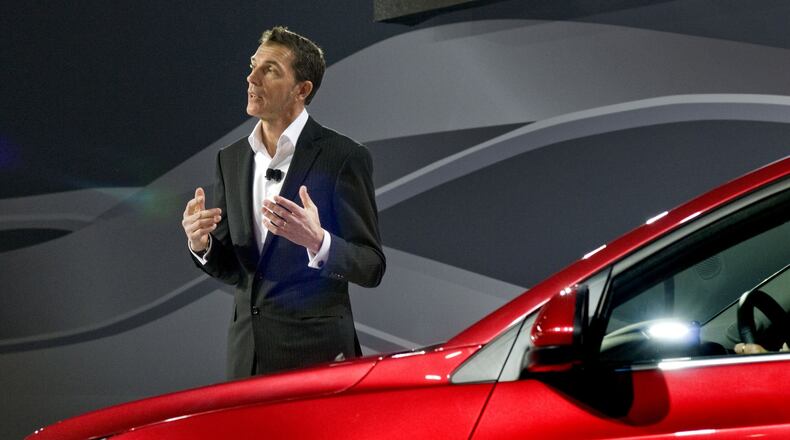“Traditional cues that customers have gotten used to can go away now,” he said in an interview this year.
“It’s a hard road for designers, who for so many years had their heads tied around expected proportion to suddenly be given freedom on what to say. It will take a little while for them to get into that.”
Needless to say, Simcoe will have a major role in defining that.
Formerly vice president of GM International Design based in Australia and Korea, Simcoe joined GM in 1983 as a designer at Holden in Australia, becoming director of Design for GM Asia Pacific in 1995, and executive director of Asia Pacific Design in 2003. The following year, he was named executive director of North American Exterior Design.
His timing was fortuitous.
Under Ed Welburn, the man Simcoe replaced as vice president of General Motors Global Design last year, GM Design blossomed from a parochial American outpost to a true international operation across 10 design centers in the U.S., Germany, South Korea, China, Australia, Brazil and India. During this time, Simcoe oversaw the exterior design of the GMC Terrain, Buick LaCrosse, Chevrolet Camaro and Equinox, and Cadillac CTS.
Simcoe admired such storied GM vehicles as the 1959 Corvette Stingray Racer, created when stylists had no regulations to adhere to. These days, product designers, not stylists, determine a vehicle’s appearance.
“A stylist has a vision and creates a beautiful piece of sculpture, but by the time they get it to the road, it doesn’t look anything like it; it’s lost some of its character and emotion. A designer has the ability to blend both the style with the function and the criteria that you need to work with.”
Some would say GM has too many stylists, given the company’s longstanding habit of creating stunning concept cars like the Cadillac Escala and Buick Avista, only to offer production cars that are never quite as captivating.
“I’ll take that criticism,” he said. “The Escala is where we are now and where we’re going for Cadillac and for all of the brands.”
Certainly GM Design is better situated and more consistent than it’s been in decades.
“It takes about 10 to 15 years to get on a roll with a brand properly. And all of the brands at GM have had to come back to the place where they once were positioned. And I don’t think that in the last 10 years or so that we designed and released anything that’s bad.”
Still, maintaining and improving GM’s design renaissance is no small task given the changes underway in the auto industry.
“It’s a challenge to pick a place and where to go where no one’s been before, because it’s all new to customers and to us. At the same time, it’s really exciting because the designers get to play with things that their hands have been tied with before,” Simcoe said.
About the Author
